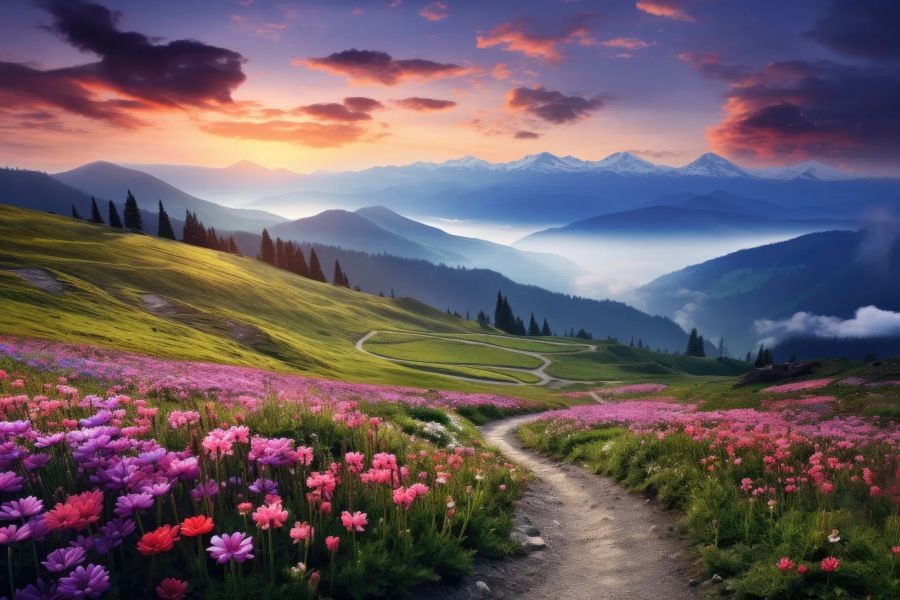When filmmakers think of New Zealand, they often envision sweeping landscapes, rolling hills, and lush forests that have graced countless film productions. However, while the country's natural beauty is undeniably captivating, relying solely on its scenic vistas can be a double-edged sword for filmmakers. The cinematic allure of New Zealand's landscapes can overshadow critical elements necessary for a successful film. Let's dive into why filmmakers should reconsider the over-reliance on natural scenery and explore the more nuanced dynamics of filmmaking in New Zealand.
Understanding the Allure: New Zealand's Natural Scenery
New Zealand's landscapes have been immortalized in films like "The Lord of the Rings" and "The Hobbit" trilogies, which have forever etched the country's dramatic vistas into the minds of audiences worldwide. Tourism New Zealand reports a significant increase in visitors wanting to experience Middle-earth first-hand, contributing to a $1.2 billion economic impact annually. This allure is potent, yet it carries inherent risks that filmmakers must navigate.
The Risk of Overshadowing: A Deeper Look
While the natural backdrop is a compelling draw, excessive reliance on scenery can inadvertently detract from other crucial filmmaking components like storyline, character development, and thematic depth. A film's narrative must engage audiences beyond visual appeal. Films such as "The Revenant," which expertly integrated its natural setting into the narrative, prove that storytelling is paramount.
Case Study: The Importance of Narrative Over Scenery
Case Study: "The Revenant" – Integrating Landscape into Storytelling
Problem: "The Revenant," directed by Alejandro González Iñárritu, faced the challenge of ensuring its stunning natural backdrops did not overshadow the film's narrative.
Action: The filmmakers used the environment as a character within the story, enhancing the protagonist's survival journey.
Result: The film grossed over $533 million worldwide and earned multiple Oscars, showcasing the power of integrating scenery into narrative.
Takeaway: New Zealand filmmakers can learn from this approach, ensuring that stunning landscapes complement rather than dominate storytelling.
Economic Considerations: Beyond the Beauty
New Zealand's film industry contributes significantly to its economy, with the Ministry of Business, Innovation and Employment (MBIE) noting the industry generated approximately $3.3 billion in revenue in 2022. However, over-reliance on natural scenery can lead to financial pitfalls.
A Data-Driven Perspective
- Production Costs: Filming in remote locations can escalate costs due to logistical challenges.
- Limited Appeal: Overemphasis on scenery may limit audience appeal to niche markets.
- Competition: Other regions offer competitive tax incentives, influencing production decisions.
For instance, while New Zealand offers a 20% baseline rebate for international productions, countries like Canada provide up to 35%, making them attractive alternatives.
Balancing Act: Scenery and Innovation
Filmmakers must balance leveraging New Zealand's natural beauty with innovative storytelling and technological advancements. Embracing technologies like virtual reality (VR) and augmented reality (AR) can enhance storytelling without solely depending on landscapes.
Industry Insight: The Role of Technology
Recent advancements in VR and AR offer filmmakers new dimensions for storytelling. Companies like Weta Digital, based in Wellington, are at the forefront of integrating digital effects with traditional filmmaking, offering a blueprint for the future.
Myths Busted: Common Misconceptions
Myth: "New Zealand's scenery is enough to make any film successful." Reality: While visuals attract, a strong narrative and characters sustain audience engagement.
Myth: "Filming in New Zealand is always cost-effective." Reality: Remote locations can incur high logistical costs, impacting budgets significantly.
Future Trends: The Evolving Filmmaking Landscape
Looking ahead, the integration of digital technologies and a focus on diverse storytelling are set to shape New Zealand's film industry. According to NZTech, digital transformation in filmmaking is expected to grow by 15% annually, driving innovation and expanding creative boundaries.
Conclusion: Rethinking Your Approach
While New Zealand's natural beauty is a powerful asset, filmmakers must be strategic in its use, ensuring it complements rather than overshadows other critical elements of filmmaking. Embracing technology, innovation, and robust storytelling will position filmmakers for success. What’s your take on integrating New Zealand’s scenery with advanced filmmaking techniques? Share your insights below!
People Also Ask
How does relying on natural scenery impact film production in New Zealand? While stunning backdrops attract initial attention, over-reliance can lead to overshadowed storytelling and increased production costs.
What are the biggest misconceptions about filming in New Zealand? A common myth is that New Zealand's scenery alone guarantees a film's success, but narrative and character depth are equally crucial.
What upcoming changes could affect New Zealand's film industry? By 2026, digital transformation and increased global competition may require New Zealand to innovate and diversify its filmmaking approaches.
Related Search Queries
- New Zealand film industry trends
- Impact of natural scenery on storytelling
- Digital transformation in filmmaking
- Cost of filming in New Zealand
- Innovative filmmaking techniques































kvamarieannett
8 months ago